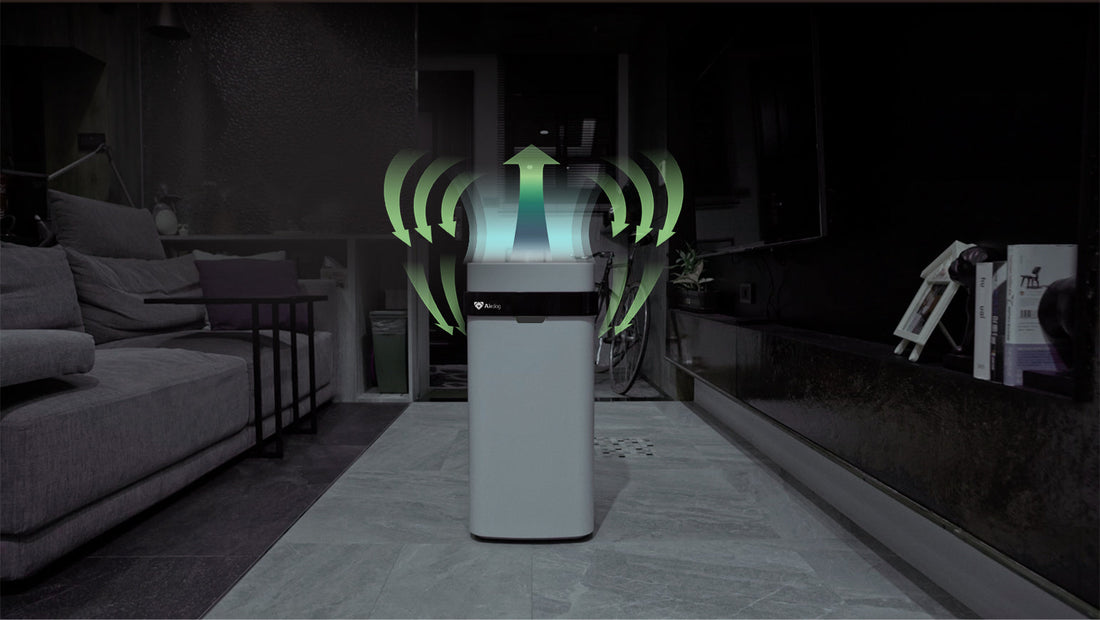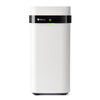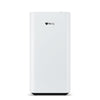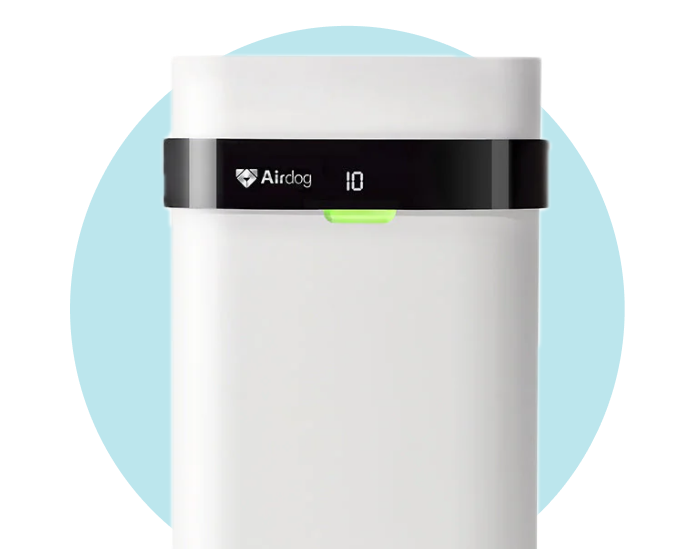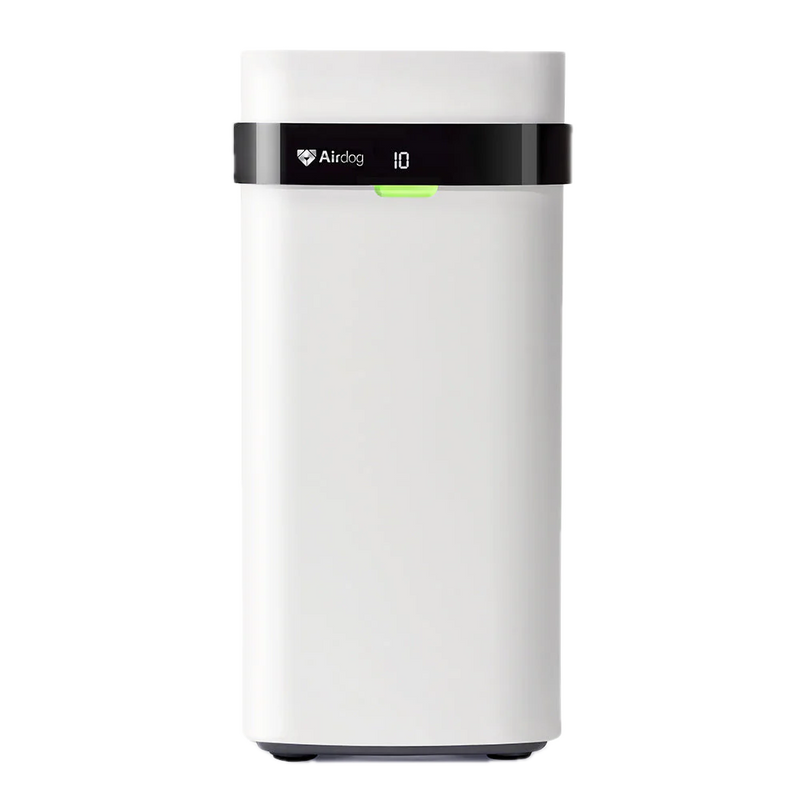Dust, pet dander, pollen, smoke, and microscopic pollutants can accumulate indoors, impacting health and comfort. Air purifiers are designed to remove these contaminants, improving air quality and creating a safer home environment. But how do air purifiers work, and what should you consider when choosing one? Let’s explore.
How Air Purifiers Work
Air purifiers use a combination of technologies to capture, trap, or neutralize pollutants. Different mechanisms target specific types of particles and gases:
HEPA Filters
-
Particle Capture: HEPA (High-Efficiency Particulate Air) filters are the standard in air purification. They excel at trapping particles as small as 0.3 microns, including dust, pollen, and pet dander.
-
Mechanism: Particles are captured through interception, impaction, and diffusion, ensuring nearly 99.97% of pollutants are removed.
Activated Carbon Filters
-
Odor and Gas Absorption: Beyond particle removal, activated carbon plays a critical role in absorbing odors and gases. This material, made from carbon-rich sources, is treated to create a vast network of pores, increasing its surface area for maximum absorption.
-
Benefits: The use of activated carbon in air purifiers means that not only are physical particles removed from the air, but also chemical vapors and odors, resulting in a fresher and more pleasant indoor environment.
UV-C Light
-
Germs and Pathogen Elimination: UV-C light adds another layer of protection by effectively killing germs, bacteria, and viruses. This technology utilizes short-wave ultraviolet light to disrupt the DNA of microorganisms, rendering them harmless.
-
Safety and Efficacy: While direct exposure to UV-C light can be harmful to humans, when contained within an air purifier, it safely neutralizes pathogens without posing a risk to indoor occupants, contributing to a healthier living space.
Ionizers
-
Particle Attraction: Ionizers work by emitting charged ions into the air, which attach to pollutants, making them heavier and causing them to settle out of the breathing space. This process can help reduce the presence of airborne contaminants.
-
Ozone Concerns: It's important to note that some ionizers may produce ozone, a lung irritant, as a byproduct. While ionizers can be effective in pollutant reduction, selecting a certified low-ozone model is important for safe air purification.
By combining these technologies, air purifiers tackle a wide range of pollutants, from dust and allergens to odors and microbes, making them a crucial part of maintaining a healthy indoor environment.
Health Benefits of Air Purifiers
Air purifiers do more than improve comfort—they can positively impact health:
Allergy Relief
-
Reduced Pollen and Allergens: For those suffering from allergies, air purifiers with HEPA filters are particularly effective in capturing pollen, pet dander, and dust mites, common triggers of allergic reactions.
-
Improved Sleep Quality: Fewer airborne allergens often translate to more restful sleep.
Asthma Support
-
Decreased Asthma Triggers: Air purifiers help to remove common asthma triggers from the indoor environment, including dust, pet dander, and even smoke particles.
-
Enhanced Respiratory Health: By maintaining cleaner air, people with asthma can experience fewer symptoms and flare-ups, contributing to better respiratory health.
Reduction in Respiratory Diseases
-
Lowered Pollution Exposure: Constant exposure to indoor air pollutants can lead to or exacerbate respiratory diseases. Air purifiers work to reduce the level of these pollutants, thereby mitigating the risk of developing such conditions.
-
Improved Lung Function: By filtering out harmful particles, air purifiers can contribute to improved lung function and a decrease in respiratory symptoms.
Potential Cardiovascular Benefits
-
Impact on Blood Pressure: Some research suggests that reducing ultrafine particles indoors may help lower diastolic blood pressure and support heart health.
-
Reduction of Harmful Particles: The removal of ultrafine particles from the air, which are known to have adverse effects on cardiovascular health, underscores the potential benefits of air purifiers in this area.
Even in homes that appear clean, invisible pollutants can persist. Air purifiers provide continuous filtration where you spend the most time, offering ongoing protection.
Who Benefits Most from Air Purifiers
Certain groups, owing to their unique vulnerabilities or environmental circumstances, find air purifiers not just beneficial but essential.
Children with Asthma
Children, with their developing lungs, are particularly susceptible to the harmful effects of polluted air. For those diagnosed with asthma, the situation becomes even more critical.
-
Significant Symptom Reduction: Air purifiers with HEPA filters can remove particulate matter, thereby reducing asthma triggers in the environment. This leads to a marked decrease in asthma symptoms and improves the overall quality of life for affected children.
-
Not a Standalone Solution: While air purifiers can significantly mitigate asthma symptoms, an air purifier’s role is only part of a broader asthma management strategy, including avoiding smoking indoors and maintaining a clean living environment.
Individuals with Allergies
Allergens lurk in every home, whether in the form of dust mites, pollen, or pet dander. For those with allergies, these seemingly innocuous particles can trigger debilitating reactions.
-
Allergen Reduction: By capturing airborne allergens, air purifiers can significantly reduce the occurrence of allergic reactions. This is especially beneficial during peak allergy seasons.
-
Improved Sleep and Daily Functioning: A reduction in allergen exposure means fewer symptoms, leading to better sleep and more productive days.
-
Quality of Life: The ability to breathe easier can dramatically improve one's quality of life, making air purifiers an invaluable investment for allergy sufferers.
Pet Owners
Pets bring joy, companionship, and unfortunately, a lot of dander. For pet owners, especially those with sensitivities to pet allergens, maintaining a clean indoor environment becomes a challenge.
-
Dander Control: Air purifiers effectively capture pet dander, one of the most common triggers for indoor allergies, making cohabitation with furry friends more comfortable for everyone.
-
Odor Reduction: Beyond allergens, air purifiers with activated carbon filters can also tackle pet odors, keeping the home smelling fresh.
Residents in High Pollution Areas
Urban living comes with its share of air quality challenges. For those residing in areas with high levels of outdoor pollution, the indoor air quality can be equally compromised.
-
Barrier to Outdoor Pollutants: Air purifiers act as a barrier, filtering out pollutants that find their way indoors. This is crucial for maintaining a healthy living environment in densely populated or industrially active areas.
-
Respite from Smog and Smoke: Especially during wildfire seasons or in cities with high smog levels, air purifiers provide a much-needed respite, filtering out smoke particles and harmful gases.
While everyone can benefit from cleaner air, these groups often find air purifiers essential for maintaining a healthier home environment.
Choosing the Right Air Purifier
Selecting the right air purifier depends on room size, pollutant type, and lifestyle needs:
Considerations for Size and Space
-
Room Size Compatibility: Air purifiers come with specifications designed for various room sizes. Ensure the unit you choose is powerful enough to filter the air in your living space effectively. A purifier too small for a room won't provide the desired air quality improvements.
-
Placement and Flow: Consider where an air purifier will be most effective in your home. Units should be placed in areas with high traffic or where you spend the most time for maximum benefit.
Pollutant Type
Choosing an air purifier that targets the specific pollutants in your home is key to maximizing effectiveness:
-
HEPA filters capture airborne particles like dust, pollen, and pet dander.
-
Activated carbon filters handle odors and VOCs from cooking, smoke, or chemicals.
-
UV-C light or ionization systems target microbes and ultrafine particles. Advanced options like Airdog actively capture ultrafine particles and neutralize microbes, providing more comprehensive air cleaning.
Noise Levels for Comfort
-
Quiet Operation: Since air purifiers often run continuously, choose a unit with a noise level that you find comfortable. Many models provide decibel ratings and settings for quieter operation at night to ensure your living space remains peaceful.
Smart Features
-
Remote Control and Monitoring: Smart air purifiers allow you to monitor and control your indoor air quality from your smartphone or other devices. This feature is invaluable for making real-time adjustments or checking air quality levels without being physically present.
-
Integration with Home Technologies: The latest air purifiers seamlessly integrate with existing smart home systems. This connectivity means your air purifier can work in tandem with other smart devices, creating a more cohesive and automated living environment.
-
Customization and Alerts: Smart features also enable the customization of purification settings to suit your schedule and lifestyle, along with providing alerts when filters need replacing or when air quality changes.
Matching your air purifier to your specific needs ensures long-term efficiency and better indoor air quality.
Limitations and Proper Use
Air purifiers are powerful tools, but they have limits:
-
Not All-Purpose: Some gases and chemical vapors require specialized filters, like activated carbon.
-
Room Size Matters: A small unit won’t effectively purify a large space.
-
Maintenance is Key: Dirty or clogged filters reduce efficiency and can reintroduce pollutants.
-
Complement, Don’t Replace: Use alongside ventilation, source control, and regular cleaning for the best results.
The Bottom Line: How Air Purifiers Work for Healthier Homes
In short, air purifiers work by removing dust, allergens, odors, VOCs, and microscopic pollutants, improving both health and comfort indoors. Advanced systems like Airdog take air purification a step further—its TPA technology actively captures ultrafine particles and neutralizes harmful microbes, delivering a more complete solution for cleaner, healthier indoor air.
By choosing the right purifier for your space, maintaining it properly, and combining it with other good indoor air practices, you can breathe easier every day. Air purifiers don’t just freshen the air—they make your home safer, healthier, and more comfortable for everyone.

